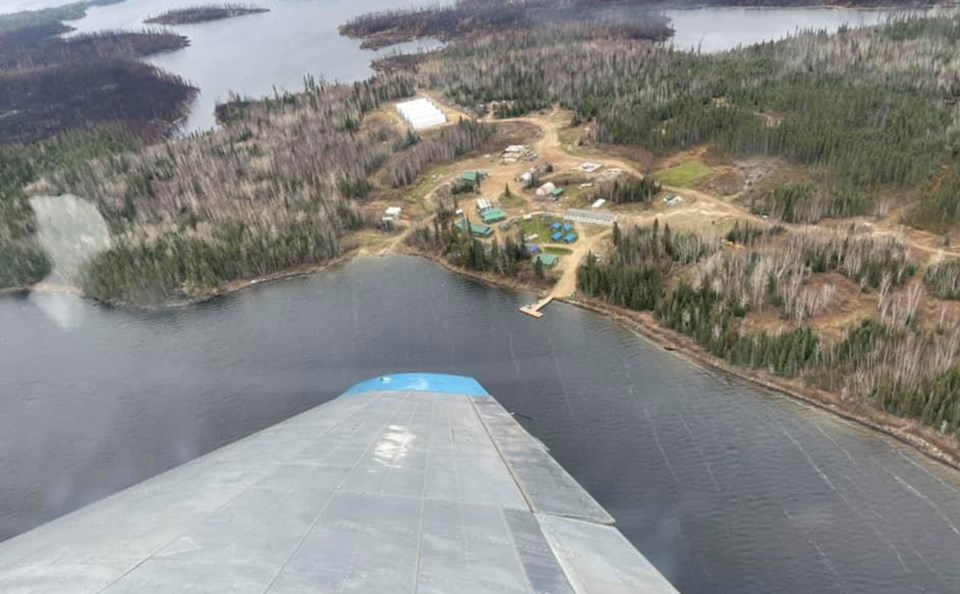Gold remains the backbone of mining activity in northwestern Ontario.
And the prospects look bright for the next generation of mines with three exploration projects steadily maturing in the development cycles.
Treasury Metals expects to post a new resource calculation this quarter of its massive Goliath Gold Complex, east of Dryden.
Just before Christmas, the Toronto mine developer put the wraps on the project's largest ever drill program, at 60,000 metres, before cranking up a new campaign this winter to follow up on some promising new targets. The company holds 330-square-kilometre property between Dryden and Sioux Lookout.
The company released some encouraging drill results in a Feb. 2 news release as Treasury anticipates more ounces to an already viable mining project that's pegged for a 13-year mine life.
Situated just north of the Trans-Canada Highway, Treasury's ground runs southwest to northwest, consisting of the Goliath, Goldlund and Miller deposits.
Goliath has always been the flagship deposit with the potential for both pit and underground mining.
Since Treasury acquired the nearby Goldlund property from First Mining Gold in mid-2020, the company has been drilling to get the big geological picture of how both properties will mesh for a large-scale mining operation.
The company believes Goliath can grow beyond a 1.1-million-ounce resource into a super-sized mining operation with a centrally-located processing facility built around a series of pits, known as a hub-and-spoke development model.
To do that, CEO Jeremy Wyeth's exploration team has been compiling old drill data with the latest results into a new resource model.
The geologists have been chasing gold extensions on the eastern and western fringes of the Goliath deposit to enlarge a proposed pit as well as delve deeper, below the pit, to better outline areas for underground production.
With Goldlund, Treasury gained a property with a 65-kilometre strength length. Only three kilometres of it has been fully explored. The company sees multiple zones to probe this year.
Already underway is a 25,000-metre drilling campaign that Maura Kolb, Treasury's exploration director, said will focus on regional exploration, check into targets identified last year, and map and prospect underexplored areas at Goldlund.
"We are really excited about the new exploration targets identified for 2022," Kolb said in a news release. "We feel that growth through exploration is a real opportunity in our large and prospective land package. We hope to identify higher grade mineralization in these new exploration targets."
Want to read more stories about business in the North? Subscribe to our newsletter.
To the northeast, Vancouver's First Mining Gold expects to kick off a feasibility study soon on its Springpole Gold Project, 110 kilometres east of Red Lake.
Springpole is a 5-million-ounce gold project that the company is taking through an environmental assessment over the next two years for a proposed US$718 million open-pit and milling operation. The project also contains more than 20 million ounces of silver.
The company is looking at an 11-year production life. The bulk of that activity will take place in the first nine years with processing of lower-grade stockpiles taking place in the last two years.
A portion of the deposit sits under the bay of a lake, which means building coffer dams and draining part of the lake.
The project sits in a geological district know as the Birch Uchi greenstone belt, viewed as a geological extension of the Red Lake camp. It's a neighbourhood that's attracting plenty of attention from other explorers. Most of the past exploration work was done in 1930s and '40s, making it an area that's ripe to apply modern techniques.
Sign up for the Sudbury Mining Solutions weekly newsletter here.
Near Pickle Lake, Australia's Auteco Minerals expects to easily build more ounces at its Pickle Crow gold project, a 10-minute drive from the airport.
With five rigs turning this winter, Perth-based Auteco said it's pulling "outstanding" results from its 50,000-metre drilling program to set the stage for a resource update due out sometime this month.
The project already has an inferred resource of 1.7-million-ounces of high-grade gold at an average grade of 8.1 grams per tonne.
The company has seen rapid resource growth on the 496-square-kilometre property, which sits in the middle of an historic gold camp. The former Pickle Crow Mine contains an abundance of ore that was never mined due to sinking gold prices in the 1960s. There are other greenfield areas nearby that were never fully explored.
In mid-January, Auteco released a slew of high-grade hits from its drilling program. The focus has been around the historic mine workings with two major discoveries, dubbed Carey and Tyson, with occurrences found further out in some underexplored areas.
"The more we drill, the more gold we find," said Ray Shorrocks, Auteco's executive chairman, in a Jan. 18 statement. "This outstanding success rate reflects the world-class quality of the Pickle Crow mineralised system.
"These latest results contain mineralization well outside the current 1.7Moz Resource, which shows the size of the geological system."
Auteco has encountered two styles of gold mineralization at Pickle Crow; the narrow vein style that's been traditionally mined, and the broader mineralization hosted in banded iron formations. The company said it's been getting exceptional hits with both.
Shorrocks said in a webcall at the Noosa Mining Conference last November that the ore body could grow to 3 million to 5 million ounces.
In believing Pickle Crow has such enormous upside, Shorrocks said they've started their advanced exploration permitting and are assessing what kind of milling infrastructure will be needed on site.




